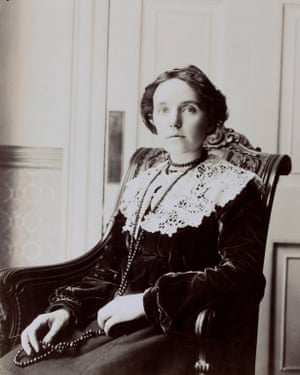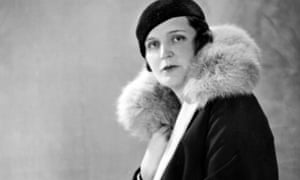Augusta Holmès was a remarkably gifted French composer, pianist and singer with a voice of extraordinary range and colour. Rossini told an audience after one of her early concerts: “Mark my words, you will hear a lot more from her. Remember that Rossini told you this.” Liszt wrote that the works by her male contemporaries were mere trifles compared to her 1870 opera Astarté.
She was a prolific composer of music conceived for large forces. She wrote her own texts and libretti, and took part in designing sets and costumes for her operas. She was well connected in Paris’s cultural circles, counting among her friends and supporters Saint-Saëns (who repeatedly proposed marriage), César Franck, Vincent d’Indy, Stéphane Mallarmé, Rodin and Renoir, who painted her three daughters.
Today, International Women’s Day, you might hear her music on Radio 3 or be reading about her, but why is she, and so many of her female contemporaries, not celebrated every day? It’s not for lack of ambition, talent or accomplishment.
Holmès set up home with poet and critic Catulle Mendès. They had five children, who were largely left to the care of their father, so Holmès could concentrate on her career. But because she never married, she was able to retain financial independence by being able to claim the fees for her work, and was one of the few female composers who – aside from a handful of her first songs at the age of 14 – did not publish under a pseudonym.
By 1875, her compositions were widely performed in France, and she became the first female composer whose symphonic works were premiered by prestigious orchestras and conductors, and whose opera was performed at Paris’s Palais Garnier. She won a commission to write an ode celebrating the centenary of the French Revolution and set it for a 900-strong choir and an orchestra of 300 players. After the performance, Saint-Saëns declared that France had finally found its muse, and critics championed her as a musical Marianne. Her Hymne à la Paix premiered in May 1890 to an audience of 4,000, who called her out 18 times.

And yet despite her many accomplishments, we find the press of her day concentrating instead on descriptions of her beauty and charm, and speculating about her affairs. There was more written about the exact shade of her hair than about her music. After the premiere of her 1895 opera La Montagne Noire, one critic had this to say: “We do not want to open the doors of our theatres and opera houses to women writers and composers.”
Why is this artist, who was respected by Liszt, Wagner, Saint-Saëns and Franck, among others, barely remembered today? Why does she not feature in concert programmes? And why has only one recording of her music ever been released, more than two decades ago?
We are the poorer for her absence. Without knowing and understanding the work of female composers, we will always have a limited view on the history of composition. Why do we still differentiate between male and female composers? Surely gender has no bearing on the quality of the music.
In Holmès’s day, music publishers rarely took risks with orchestral works written by women, and it was generally expected that a female composer in the 19th century would write salon music or songs.
But far from writing dainty salon pieces, many of Holmès’s female contemporaries also created substantial large-scale works. Among them are the Swedish composers Valborg Aulin (1860-1928) and Elfrida Andreé (1841-1929). Aulin wrote numerous works for piano, including the stunning Grande Sonate Sérieuse (1885) and chamber and organ music. Among Andrée’s compositions are symphonies, an opera and other orchestral works. The German composer Emily Mayer (1812-83) wrote eight symphonies, an opera, a piano concerto, and a number of orchestral overtures. The French composer Marie Jaëll (1846-1925) created two piano concertos, an opera, and works for orchestra and voices. In England, Alice Mary Smith (1839-84) wrote a large number of secular and sacred choral works, overtures, symphonies and a clarinet concerto, but no publisher was interested in anything other than her songs and piano music.

The music written by these forgotten composers shows integrity, gravitas and invention, and deserves to be heard on its own merit, with 21st-century ears, and without 19th- and 20th-century prejudices. We do not differentiate between female and male violinists, pianists, or other instrumentalists. Why do we still feel the need to point out that a conductor or composer is female? And, most importantly, does making a distinction between male or female composers prejudice our experience of their music?
Let us heed the words of Maya Angelou: “Prejudice is a burden that confuses the past, threatens the future and renders the present inaccessible.” And let us listen to the music of Augusta Holmès and her contemporaries with the openness and curiosity it deserves.
• Music by Augusta Holmès can be heard on BBC Radio 3 on International Women’s Day (8 March) as part of Forgotten Women Composers. Anastasia Belina is a musicologist, writer and presenter who lectures at the Royal College of Music.

